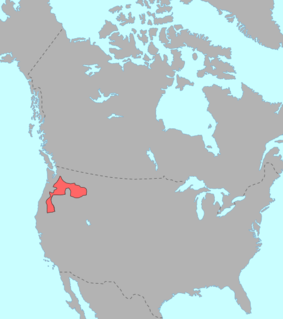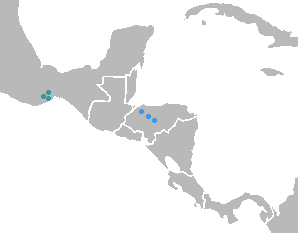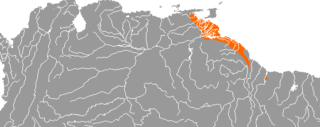
Macro-Arawakan is a proposed language family of South America and the Caribbean centered on the Arawakan languages. Sometimes, the proposal is called Arawakan, and the central family is called Maipurean.

Comecrudan refers to a group of possibly related languages spoken in the southernmost part of Texas and in northern Mexico along the Rio Grande. Comecrudo is the best known.

Plateau Penutian is a family of languages spoken in northern California, reaching through central-western Oregon to northern Washington and central-northern Idaho.

The Tequistlatecan languages, also called Chontal of Oaxaca, are three close but distinct languages spoken or once spoken by the Chontal people of Oaxaca State, Mexico.

Arawan is a family of languages spoken in western Brazil and Peru (Ucayali).
The Araucanian languages, a small language family of indigenous languages of the Americas, is located in central Chile and neighboring areas of Argentina. The living representatives of this family are Mapudungu and Huilliche. These are sometimes considered divergent dialects of a single language isolate.
Lyle Richard Campbell is an American scholar and linguist known for his studies of indigenous American languages, especially those of Central America, and on historical linguistics in general. Campbell is professor emeritus of linguistics at the University of Hawaii at Manoa.

The Maxakalían languages were first classified into the Gê languages. It was only in 1931 that Loukotka separated them from the Gê family. Alfred Métraux and Curt Nimuendaju Unkel considered the Maxakalían family isolated from others. John Alden Mason suggests a connection with the Macro-Gê stock, confirmed by Aryon Dall’Igna Rodrigues.

Pano-Tacanan is a proposed family of languages spoken in Peru, western Brazil, Bolivia and northern Paraguay. There are two close-knit branches, Panoan and Tacanan, with 33 languages. There are lexical and grammatical similarities between the two branches, but it has not yet been demonstrated that these are genetic.
Algonquian–Wakashan is a hypothetical language family composed of several established language families that was proposed in 1929. The proposal consists of the following:

Jicaquean, also known as Tolan, is a small language family of Honduras. There are two attested Jicaquean languages, Tol and Western Jicaque, which Campbell (1997) reports were about as distant as English and Swedish. Only Tol survives.
Chico is an extinct Maiduan language formerly spoken by Maidu peoples who lived in Northern California, between Sacramento and the Sierra foothills.
Terrence Kaufman is an American linguist specializing in documentation of unwritten languages, lexicography, Mesoamerican historical linguistics and language contact phenomena. He is emeritus professor of the department of anthropology at the University of Pittsburgh.

Tolatecan is a proposal by Campbell and Oltrogge (1980) linking two language families of Mesoamerica, Tequistlatecan and Tol/Jicaque languages of Honduras. It does not have good support.
Macro-Mayan is a proposal linking the clearly established Mayan family with neighboring families that show similarities to Mayan.
Quechumaran or Kechumaran is a language-family proposal that unites Quechua and Aymara. Quechuan languages, especially those of the south, share a large amount of vocabulary with Aymara. Terrence Kaufman finds the proposal reasonably convincing, but Willem Adelaar, a Quechua specialist, believes the similarities to be caused by borrowing during long-term contact. Lyle Campbell suspects that the proposal is valid but does not consider it to have been conclusively proved.

The Nambikwaran languages are a language family of half a dozen languages, all spoken in the state of Mato Grosso in Brazil. They have traditionally been considered dialects of a single language, but at least three of them are mutually unintelligible.

Warao is the native language of the Warao people. A language isolate, it is spoken by about 33,000 people primarily in northern Venezuela, Trinidad and Tobago, Guyana and Suriname. It is notable for its unusual object–subject–verb word order. The 2015 Venezuelan film Gone with the River was spoken in Warao.









